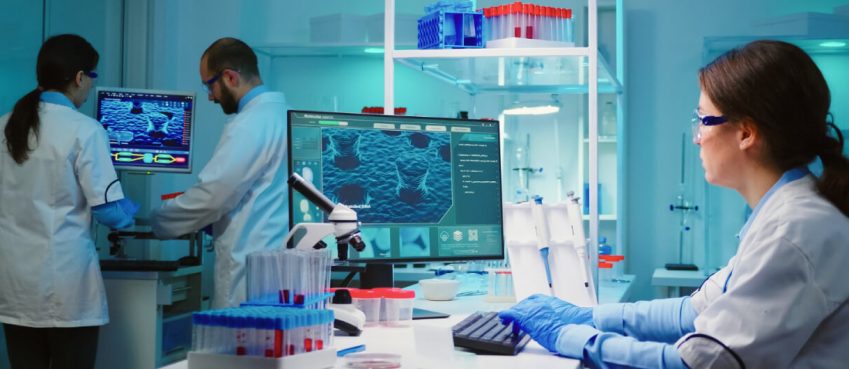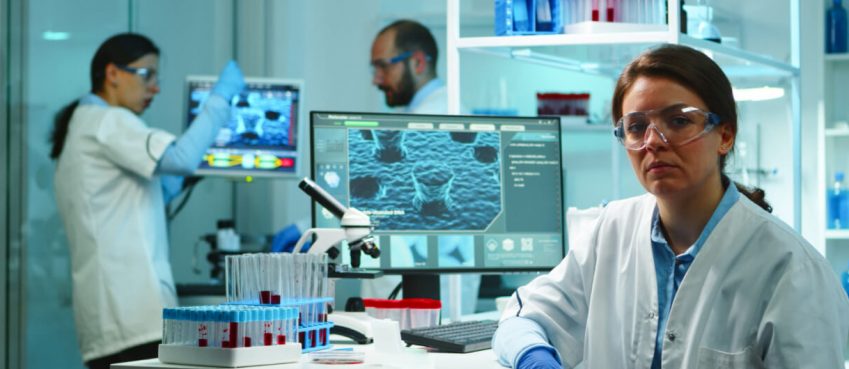
Interventional Radiology, a medical specialty, is rapidly growing. It allows radiologists to diagnose, treat, and cure a wide range of diseases using minimally invasive procedures. Interventional radiologists examine the inside of the body using imaging tests like CT scans and MRIs.
Many interventional radiology procedures can be used in place of open surgery. This procedure can treat many diseases, according to the interventional radiologist.
- Liver and kidney cancers
- Uterine fibroids
- Varicose veins, blood clots in legs
- Prostate enlargement
- Pelvic congestion syndrome
- Vein enlargement in the scrotum
Interventional radiology is also becoming more popular because of its lower risk of major complications and the fact that it usually costs less than major surgeries.
Procedures of Interventional Radiology
Radiologists can use a variety of procedures to combat different diseases. These are:
Clot-Dissolving Medicines Injectable
Radiologists inject drugs that dissolve clots, such as tissue plasminogen activators. This activator aids in dissolving blood clots and increasing blood flow to the legs and arms.
Angiography
This is an X-ray of the veins to determine if there are any blockages or narrowings.
Embolization
This type of radiology involves the injection of a substance into a blood vessel in order to stop blood flow. This procedure is usually used to control or stop bleeding.
Also read: How to Start An E-commerce Business From Scratch in 2021Angioplasty
A doctor inserts a catheter with a small balloon at its tip into a vein. The doctor then inflates this balloon to clear the blockage.
Needle Biopsy
Radiologists insert a small needle in any part of the body to take a tissue sample. This is done using imaging techniques. A needle biopsy can provide a diagnosis and treatment without the need for surgery. Needle breast surgery can be an example of needle-based biopsy.
Catheters Insertions
A catheter is placed in the large vein by a radiologist to provide chemotherapy medication, hemodialysis, and nutrition. A catheter may be placed in the large vein by a patient before they can receive bone-marrow transplants.
Also read: Top 3 Lessons I Learned from Growing a $100K+ BusinessPlacement of Stents
The radiologist inserts a tiny mesh coil called a stent into the blocked blood vessel. The doctor then expands the stent in order to clear the blockage.
Intravascular Ultrasound
Radiologists use ultrasound to examine the blood vessels to identify other problems.
Inferior Vena Cava Filters
A doctor inserts a small needle in the inferior vena cava, also called IVC. These filters are essential in catching blood clots, which may then go into the lungs.
Gastrostomy Tubes
A radiologist will insert a tube into the stomach if you have difficulty eating through your mouth.
These procedures are safer than open surgery and offer many benefits.
Also read: The Five Best Free Cattle Record Keeping Apps & Software For Farmers/Ranchers/Cattle OwnersRadiology Interventions: The Benefits
These are just a few reasons to consider interventional radiology procedures over major medical procedures.
There is no hospital stay
We don’t want to go to the hospital if we don’t have to. Most interventional procedures can be completed in a shorter time frame than other major surgeries. A patient doesn’t have to stay in a hospital and can leave as soon as the procedure has been completed.
No Pain
Interventional radiologists insert high-tech wires into the wrist or groin. The wires travel from the wrist to the groin and then through the vascular system, reaching any location where the problem is. There are no nerves within blood vessels. Interventional radiology procedures are painless because there is no nerve in the blood vessels.
You can expect a faster recovery in a few weeks
IR procedures are usually more effective than traditional surgeries. A hysterectomy, which is a procedure to remove the womb, can take several weeks to heal. The recovery time for the uterine fibroid embolization procedure is only a few days.
There is no general anesthesia
General anesthesia has many risks. These risks are not negligible for most open surgeries. Interventional radiology procedures are not considered to require general anesthesia. You will usually receive local anesthesia to calm your nerves and end general anesthesia.
Also read: Best Oculus Quest 2 Accessories To Bring Home In 2024There is less blood loss
There are risks associated with minor and major surgeries. These risks cannot be minimized. Contrary to these types of surgeries, interventional radiology procedures have fewer risks.
Lower Infection Risk
After surgery, there are always risks of infection. Larger cuts can increase the risk of infection during major surgery. These risks can be decreased, but cannot be eliminated. There are almost no chances of infection following an IR procedure.
Conclusion
As compared to major surgery, interventional radiology can be considered safe and effective. There are fewer side effects after and during the IR procedure than with open surgery. This treatment option is available to you without restriction if your doctor consents.
Top 10 News
-
01
10 Top-Rated AI Hugging Video Generator (Turn Images Into Ki...
Monday December 23, 2024
-
02
10 Top-Rated Face Swap AI Tools (Swap Photo & Video Ins...
Friday December 20, 2024
-
03
10 Exciting iPhone 16 Features You Can Try Right Now
Tuesday November 19, 2024
-
04
10 Best Anatomy Apps For Physiologist Beginners
Tuesday November 12, 2024
-
05
Top 10 Websites And Apps Like Thumbtack
Tuesday November 5, 2024
-
06
Top 10 Sites Like Omegle That Offer Random Video Chat
Monday October 21, 2024
-
07
Entrepreneurial Ideas To Make 5K In A Month (10 Realistic Wa...
Monday October 7, 2024
-
08
[10 Best] Cash Advance Apps Like Moneylion And Dave (No Cred...
Friday September 20, 2024
-
09
Top 10 Richest Person In The World
Tuesday August 27, 2024
-
10
Top 10 Unicorn Startups In The World (2024-25)
Monday August 26, 2024







